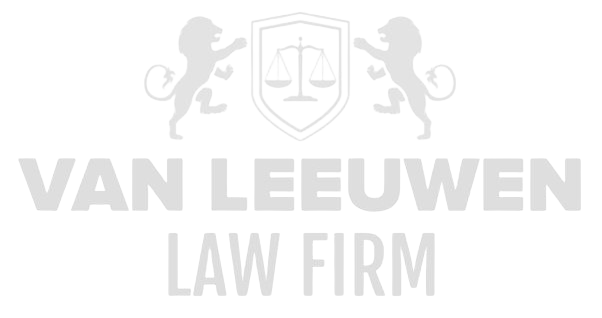The emergence of artificial intelligence and automated systems has profoundly reshaped the legal and ethical landscape, fundamentally challenging traditional concepts of liability, transparency, and accountability. Autonomous decision-making processes, driven by complex algorithms and machine learning techniques, necessitate a comprehensive reassessment and expansion of existing legal frameworks to clarify responsibilities and obligations within an increasingly digital environment. The legal implications span a wide range of application domains, from commercial transactions to regulated sectors such as financial services, healthcare, and public administration, where the balance between fostering innovation and safeguarding fundamental rights remains paramount.
The notion of governance in the context of artificial intelligence requires an integrated approach in which ethical considerations, legal frameworks, and organizational structures are seamlessly interconnected. Ensuring compliance, preventing discrimination, and minimizing the risk of harm or reputational damage lie at the heart of responsible AI policy. At the same time, organizations must remain accountable to regulators, consumers, and broader societal stakeholders, necessitating a thorough understanding of both national and international legal frameworks. Transparency, traceability, and auditability in algorithmic decision-making are no longer optional but have become fundamental components of corporate compliance.
Legal Liability in Autonomous Decision-Making
Autonomous systems that make decisions without direct human intervention present significant challenges to traditional liability models. In many legal systems, liability has historically relied upon a clearly identifiable actor—either a responsible entity or a natural person. When an algorithm acts autonomously, this line becomes blurred, raising the question of which entity can be held liable for damage or loss resulting from automated decision-making. This complexity requires a detailed analysis of contractual arrangements, product liability principles, and the attribution of decisions to developers, operators, and end-users of AI systems.
Furthermore, the legal treatment of autonomous systems implies a pressing need to revisit insurance models and risk management practices. The uncertainty surrounding liability can generate substantial financial and reputational risks, demanding a systematic approach centered on risk identification, mitigation, and monitoring. Legal frameworks must explicitly account for the role of human oversight, the degree of system autonomy, and the predictability of outcomes to provide a coherent structure through which liability can be established and enforced.
Finally, the interaction between national legislation and international standards plays a crucial role in determining liability. Automated decision-making that operates across borders—within the European Union or on global platforms—requires harmonization of liability rules, including interpretations of fundamental rights such as privacy, data protection, and consumer rights. The legal infrastructure must therefore be sufficiently flexible to integrate both local regulatory requirements and international standards while ensuring legal certainty at all times.
Transparency Obligations for Algorithmic Systems
Transparency is a core component of responsible AI governance, requiring organizations to provide clear insight into the functioning, parameters, and decision-making logic of algorithmic systems. This encompasses both the technical documentation of models and the accessibility of information for regulators and other competent authorities. Transparency is vital to maintaining trust in AI applications and ensuring that automated decision-making remains verifiable and reproducible.
Preparing transparency reports demands a detailed and systematic approach to documenting model architecture, data provenance, training processes, and validation methods. Both technical specialists and legal or compliance professionals must be able to interpret and evaluate the functioning of algorithms within the context of applicable legislation. This enables the timely identification and mitigation of risks related to unintended discrimination, data breaches, or legal non-compliance.
Moreover, transparency is intrinsically linked to accountability and oversight. Regulatory authorities, shareholders, and societal stakeholders require insight into the decisions made by AI systems, particularly where such decisions have significant implications for individuals or groups. From a legal perspective, this implies that organizations must be able to substantiate decisions, identify errors, and provide explanations—a requirement that forms the foundation of both internal and external governance structures.
The AI Act and National Implementation Challenges
The European Union’s AI Act represents a pivotal regulatory instrument governing artificial intelligence within the EU, categorizing systems according to risk levels and assigning corresponding obligations. Implementing this regulation at the national level presents member states with intricate legal and operational challenges, including the harmonization of existing legislation, the definition of enforcement mechanisms, and the allocation of responsibilities among various supervisory authorities.
Furthermore, national implementation requires an in-depth evaluation of existing legal frameworks governing data protection, consumer rights, and product safety. Effectively translating the AI Act into domestic legislation demands careful alignment with existing national regulations to prevent overlaps, inconsistencies, and legal gaps. Legal professionals play a central role in advising on compliance, conducting risk assessments, and integrating new obligations into established governance structures.
The success of national implementation also depends on adequate capacity building and knowledge development within both public and private sectors. This includes training regulators, developing internal compliance processes, and establishing audit mechanisms to monitor the use of high-risk AI systems. Only through a systematic and well-documented approach can the objectives of the AI Act—ensuring safety, transparency, and ethical compliance—be effectively realized.
Legal Boundaries of Profiling and Automated Decision-Making
Profiling and automated decision-making fall within a strict regulatory framework designed to protect individual rights from unlawful influence and discrimination. These legal boundaries are established both nationally and internationally, with particular emphasis on transparency, consent, and proportionality in the application of algorithmic systems. In many jurisdictions, heightened requirements apply to decisions that have significant consequences for individuals, such as credit scoring, recruitment and selection, or access to public services.
The legal framework governing profiling requires a careful balance between legitimate business interests and the protection of fundamental rights. This includes the necessity of explicit consent or another valid legal basis, as well as proactive measures to prevent bias and discrimination. Algorithmic systems must be designed and evaluated according to objective criteria and robust validation methodologies to systematically minimize risks of direct or indirect discrimination.
In addition, compliance with these legal boundaries necessitates ongoing monitoring and auditing of automated decision-making processes. Organizations must implement mechanisms to detect errors or deviations, produce detailed reports, and activate corrective measures where necessary. Legal professionals act as critical overseers in this process, translating statutory requirements into practical and enforceable measures while ensuring that algorithmic decision-making remains aligned with both national and international legal obligations.
Explainability Requirements in Compliance Applications
Explainability, or the ability to make the functioning and decisions of AI systems understandable, constitutes a fundamental requirement within compliance applications. Ensuring explainability is crucial for providing both internal and external stakeholders with insight into the decision-making logic, enabling the timely identification of risks, errors, and deviations. Legal and compliance professionals must be able to interpret and verify the rationale behind algorithmic outcomes, ensuring that decisions with significant legal implications are substantiated and auditable.
Explainability requirements necessitate systematic documentation of model architecture, data provenance, training processes, and parameter settings. Not only must the technical components of an algorithm be transparent, but also the methodologies employed for validation and risk assessment. Such transparency allows regulators to evaluate whether AI systems comply with legal and ethical standards and whether adequate measures have been implemented to minimize unintended discrimination or risks to fundamental rights.
Furthermore, explainability serves as a critical tool in legal disputes or audits, where organizations have an obligation to justify their algorithmic decision-making. The absence of adequate explainability can result in liability risks, reputational damage, and sanctions from regulatory authorities. In complex compliance contexts, explainability should be integrated into the design, testing, and operational phases of AI systems, thereby creating a robust mechanism for continuous assessment and accountability.
Bias Detection and Principles of Non-Discrimination
Detecting and mitigating bias in algorithmic systems is an essential pillar of ethical and legal governance. Bias can arise from historical data, unbalanced training sets, or inadequately designed models, leading to systematic disadvantage for certain groups. Legal frameworks, including anti-discrimination laws and data protection regulations, require organizations to proactively implement measures to prevent unjustified inequality.
The process of bias detection demands both statistical analysis and legal interpretation. Technical teams conduct extensive testing on datasets and model outputs to identify potential discriminatory patterns, while legal professionals assess the implications of these findings against applicable regulations and ethical standards. This multidisciplinary approach ensures that interventions are effective, proportionate, and legally defensible, maintaining algorithmic decision-making in alignment with fundamental rights.
Moreover, ensuring non-discrimination is not merely a compliance obligation but also a strategic necessity for maintaining trust and legitimacy. Organizations should implement mechanisms for continuous monitoring and periodic audits of algorithms to detect and correct potential bias at an early stage. Legal professionals play a central role in developing policies, guiding the implementation of mitigation tools, and ensuring that actions are both effective and legally sustainable.
Auditability and Oversight of Algorithms
Auditability of algorithmic systems forms the foundation for effective oversight and compliance. The ability to verify AI system decisions, trace underlying logic, and confirm data provenance is essential for demonstrating legal compliance and limiting liability risks. Audits must be systematic, documented, and reproducible, providing both internal and external regulators with insight into operational and legal conformity.
Achieving auditability requires the integration of technological and organizational measures. Technical components such as logging, version control, and traceable datasets must be combined with legal frameworks that define how audit data is managed, who has access, and what responsibilities apply in case of deviations. Only through a robust combination of technical and legal mechanisms can a fully verifiable and controllable system be ensured.
Furthermore, auditability enhances legal certainty and facilitates the resolution of disputes, claims, or regulatory investigations. It enables organizations to substantiate their decision-making, identify errors, and implement corrective measures. Legal professionals ensure compliance with both national and international standards, maintain consistency in documentation and reporting, and provide guidance on the lawful management of audit processes.
Cross-Border Data Processing and AI Training Data
Cross-border data processing presents a complex legal challenge within AI governance, as data is frequently collected, processed, and stored internationally. Legal frameworks, such as the General Data Protection Regulation (GDPR), impose strict requirements on data transfer, security, and consent, with violations potentially resulting in significant sanctions. The use of international training data necessitates explicit contractual and compliance measures to ensure adherence to laws and regulations across different jurisdictions.
Challenges of cross-border data processing extend beyond legal aspects to include operational and ethical dimensions. Variations in national legislation, differing standards for data protection, and the need to uphold ethical principles require comprehensive due diligence, risk assessment, and compliance procedures. Legal professionals are responsible for drafting binding agreements, assessing data flows, and advising on the mitigation of legal and reputational risks.
Effective governance of international AI data also demands continuous monitoring of legislative developments and case law. Organizations must be able to adjust their processes to new requirements and inform regulators of relevant measures. Establishing robust policies, documenting decisions, and ensuring accountability are essential to guarantee legal compliance, ethical integrity, and operational continuity.
Integration of Ethics into Corporate Compliance
Ethical integration into corporate compliance constitutes a fundamental pillar of responsible AI governance. Ethics extends beyond mere adherence to laws and regulations; it encompasses ensuring fairness, transparency, accountability, and societal acceptance of automated decision-making. Organizations must develop explicit policies and processes in which ethical principles are systematically embedded in the design, development, implementation, and monitoring of AI systems.
The practical implementation of ethics within compliance requires multidisciplinary collaboration among legal, technical, and strategic teams. This includes developing guidelines for responsible data usage, mitigating bias, assessing risks to fundamental rights, and ensuring accountable decision-making mechanisms. Legal professionals play a central role in translating ethical principles into operational and legal frameworks, thereby aligning compliance and accountability.
Furthermore, ethical integration reinforces stakeholder trust, including that of regulators, customers, and broader society. It enables organizations not only to comply with legal obligations but also to proactively mitigate risks of reputational damage, discrimination, or violations of fundamental rights. By explicitly embedding ethics into corporate governance, a sustainable framework is created in which AI applications operate both legally and socially responsibly.
The Role of the Legal Professional in Multidisciplinary AI-Governance Teams
The legal professional plays a central and indispensable role within multidisciplinary AI-governance teams, where expertise in law and regulation, compliance, and ethical standards converges with technical, operational, and strategic competencies. In environments where autonomous systems make complex decisions, the legal framework serves as the foundation upon which risks can be identified, managed, and mitigated. Legal professionals provide interpretation of national and international legislation, advise on contractual obligations, and ensure that organizational processes are aligned with both legal and ethical requirements.
Within such teams, the legal professional acts as a bridge between technology and regulation. Complex algorithms and machine learning models must be translated into understandable legal frameworks, ensuring that decisions are reproducible, traceable, and auditable. This encompasses not only the assessment of systems against existing laws and regulations but also proactive guidance on potential future legislation, risk analysis in automated decision-making, and the development of internal governance structures that meet the highest standards of accountability. Legal professionals contribute to the creation of policies and procedures for transparency, auditability, bias detection, and explainability, ensuring that every aspect of AI governance is robust, coherent, and legally defensible.
Moreover, the role extends to the implementation and monitoring of ethical principles within the organization. Legal expertise is essential for translating ethical guidelines into concrete, enforceable policies and operational processes. This includes oversight of compliance with non-discrimination principles, protection of fundamental rights, responsible data analysis, and the deployment of AI systems that respect societal and legal norms. By actively participating in multidisciplinary decision-making, audits, and risk assessments, the legal professional ensures that AI projects not only comply with the letter of the law but also uphold the spirit of responsible and ethically sound innovation.
Finally, the legal professional plays a crucial role in ensuring accountability and legal certainty. In an era where AI systems make autonomous decisions, mechanisms for responsibility, reporting, and compliance are indispensable for maintaining stakeholder, regulatory, and public trust. Legal professionals guide organizations in documenting decision-making processes, developing internal and external reporting tools, and implementing protocols for corrective actions in the event of deviations. Through this integrated approach, AI governance is not only addressed as a technical and organizational challenge but also provided with a legally robust and ethically responsible framework for the entire organization.















